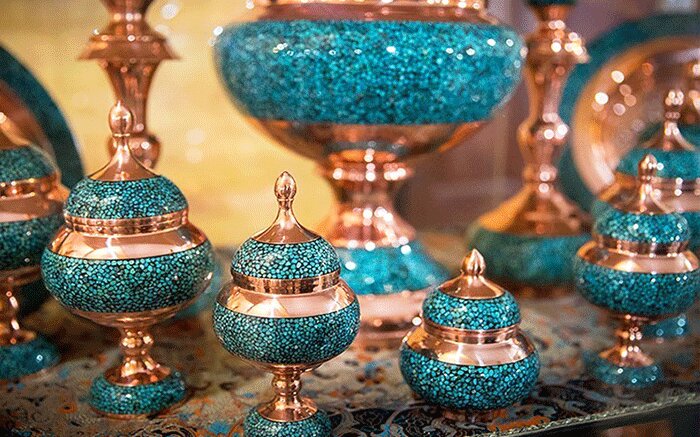Iranian handicrafts: Firuzehkubi

TEHRAN - One of the most popular handicrafts of Iran, which is both decorative and applicable, is ‘Firuzehkubi’ or turquoise inlaying.
To practice the craft, tiny pieces of turquoise are being inlaid, like mosaics, on a surface such as tools or utensils made of copper, silver, brass, or bronze.
Firuzehkubi is a rather new handicraft, beginning some seventy years ago. It was invented for the first time by the Iranian craftsman Yusef Hakimian to decorate pieces of jewelry like earrings, bracelets, brooches, etc.
Today Firuzehkubi is one of the most celebrated souvenirs of Isfahan. The Firuzeh or turquoise gems that are used in this craft are supplied by the stone workshops and stone grinds that cannot be used for other purposes.
To embellish an abject by the means of Firuzehkubi, the surrounding of the parts where turquoise is to be inlaid will be soldered and divided by a thin wire with a height of about two to three millimeters. If there are motifs and designs to be applied in the intended area, they are also drawn and soldered by the same wire. This process not only adds to the beauty of the product but also improves its durability and resistance. Then, after being washed, large or small pieces of turquoise are picked, according to Visit Iran.
The main object is heated to 30 degrees of centigrade. While heating a special kind of gum powder called “Gerdooyi” or “Walnut varnish” that acts as a glue, is poured upon the object so that it melts.
The turquoise pieces are then laid on the surface. This is the most important part of the process. If the base is a round object, the laying step is repeated. To fill the empty spaces between the inlaid pieces, the base is heated once more to forty degrees of centigrade, the gum powder is poured and the spaces are filled with smaller pieces of turquoise.
The remaining gaps that cannot be filled with stones are filled with a blue mortar. In the next step, the surface is sanded. Finally, the product is polished and obtains a shiny and smooth surface. The more elaborate a Firuzehkubi work, the more valuable it is.
AFM
Leave a Comment